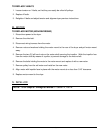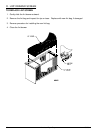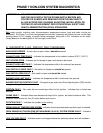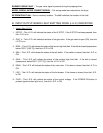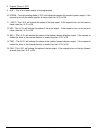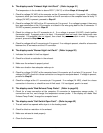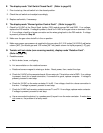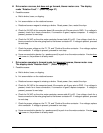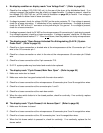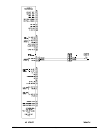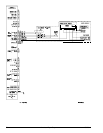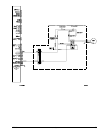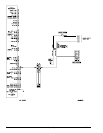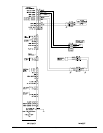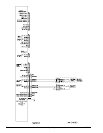
450268-1 www.amdry.com 49
H. Drive motor reverses, but does not go forward, blower motor runs. The display
reads “Rotation Fault”.* (Refer to page 57)
1. Possible causes:
a. Belt is broke, loose, or slipping.
b. Lint accumulation on the rotational sensor.
c. Rotational sensor magnet is missing or broke. Reset power, then, restart the dryer.
d. Check for 24 VAC at the computer board J8 connector pin 8 brown wire to GND. If no voltage is
present, check for a loose connection, if connection is good, replace computer. If voltage is
present, proceed to next step.
e. Check for 24 VAC on the drive motor contactor forward side A1 to A2. If no voltage, check for a
loose connection in the wire going back to the blower contactor A2. If voltage is present, proceed
to next step.
f. Check for proper voltage on the T1, T2, and T3 side of the drive contactor. If no voltage, replace
drive contactor. If voltage is present, proceed to next step.
g. Use a nonconductive device (i.e., wooden pencil) to push in on the motor contactor. If motor does
not come on, the problem is a faulty motor.
I. Drive motor operates in forward mode, but does not reverse, blower motor runs.
The display reads “Rotation Fault”.* (Refer to page 57)
1. Possible causes:
a. Belt is broke, loose, or slipping.
b. Lint accumulation on the rotational sensor.
c. Rotational sensor magnet is missing or broke. Reset power, then, restart the dryer.
d. Check for 24 VAC at the computer board J8 connector pin 9 gray wire to GND. If no voltage is
present, check for a loose connection, if connection is good, replace computer. If voltage is
present, proceed to next step.
e. Check for 24 VAC on the drive motor contactor reverse side A1 to A2. If no voltage, check for a
loose connection in the wire going back to the blower contactor A2. If voltage is present, proceed
to next step.
f. Check for proper voltage on the T1, T2, and T3 side of the drive contactor. If no voltage, replace
drive contactor. If voltage is present, proceed to next step.
g. Use a nonconductive device (i.e., wooden pencil) to push in on the motor contactor. If motor does
not come on, the problem is a faulty motor.



